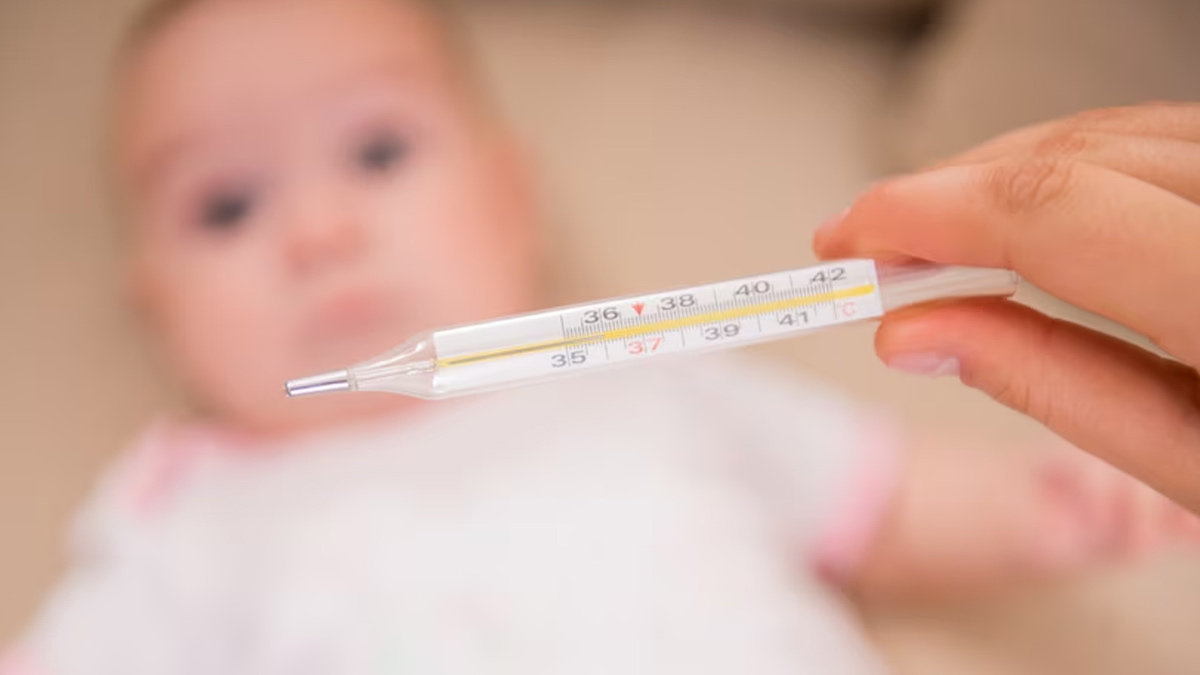
Febrile seizures can be frightening for parents. These abrupt convulsions caused by high fever in young infants can leave anyone terrified and helpless. It's important to note, though, that febrile seizures are rather common and, in most circumstances, harmless. By understanding the nature of febrile seizures and knowing how to respond, parents can support and care for their little ones during these moments of vulnerability.
Table of Content:-
Febrile seizures occur when a child is unwell and are most common between the ages of 12 and 18 months.
What are Febrile Seizures?
Febrile seizures are convulsions that can occur in children between the ages of 6 months and 5 years. They are typically triggered by a sudden spike in body temperature, usually associated with an illness or infection, such as the flu or an ear infection.
Febrile seizures may last from a few seconds to a few minutes, and although they can be alarming to witness, they rarely cause any long-term harm.
Types of Febrile Seizures
According to Dr Yashi Malhotra, Clinical Paediatrician from Fatima Hospital, Lucknow there are two main types of febrile seizures: simple and complex.
Simple febrile seizures are more common and usually involve generalised shaking or jerking of the body. The child remains conscious during the seizure and recovers quickly afterward.
Also read: Does Your Body Feel Hot Without Fever? Factors That May Be Causing It
Complex febrile seizures, on the other hand, may last longer, involve only one side of the body, or cause the child to lose consciousness. While complex febrile seizures are less common, they often require medical attention.
What to Do during a Febrile Seizure
If your child experiences a febrile seizure, it's important to stay calm and take the following steps:
Ensure Safety
Move any objects or furniture that could harm the child away from their immediate surroundings. Place a soft pillow or blanket under their head to prevent injury.
Time the Seizure
Note the time the seizure starts and ends. Although it may feel like an eternity, most seizures last only a short time. It's helpful to have this information when seeking medical advice.

Stay by Your Child's Side
Remain close to your child and monitor their breathing. Loosen any tight clothing and turn them on their side to prevent choking in case of vomiting.
Contact Emergency Services (If Necessary)
“If the seizure lasts longer than five minutes, or if it's a complex seizure and your child has difficulty breathing or turning blue, call for emergency medical assistance”, says Dr Malhotra.
After the Seizure
Once the seizure ends, comfort your child and help them regain a sense of security. It's advisable to contact your paediatrician to discuss the episode and seek further guidance. In most cases, febrile seizures are harmless and do not require specific treatment. However, your doctor may want to examine your child to rule out any underlying conditions.
Preventing Future Seizures
Although it's not always possible to prevent febrile seizures, there are steps we can take to reduce the risk:
Fever Management
Focus on treating the underlying cause of the fever, such as giving appropriate medication to lower the temperature and keeping your child well hydrated.

Temperature Regulation
Maintain a comfortable environment for your child by dressing them lightly and ensuring adequate ventilation in their room.
Also read: Dengue Hemorrhagic Fever: That Mosquito You Shouldn’t Ignore
Regular Check-ups
Schedule routine visits with your paediatrician to monitor your child's health and address any concerns promptly.
Febrile seizures may be alarming to witness, but they are usually harmless and tend not to have any long-term consequences. By staying informed, prepared, and responsive during such episodes, we can ensure our children's safety and well-being.
Also watch this video
How we keep this article up to date:
We work with experts and keep a close eye on the latest in health and wellness. Whenever there is a new research or helpful information, we update our articles with accurate and useful advice.
Current Version